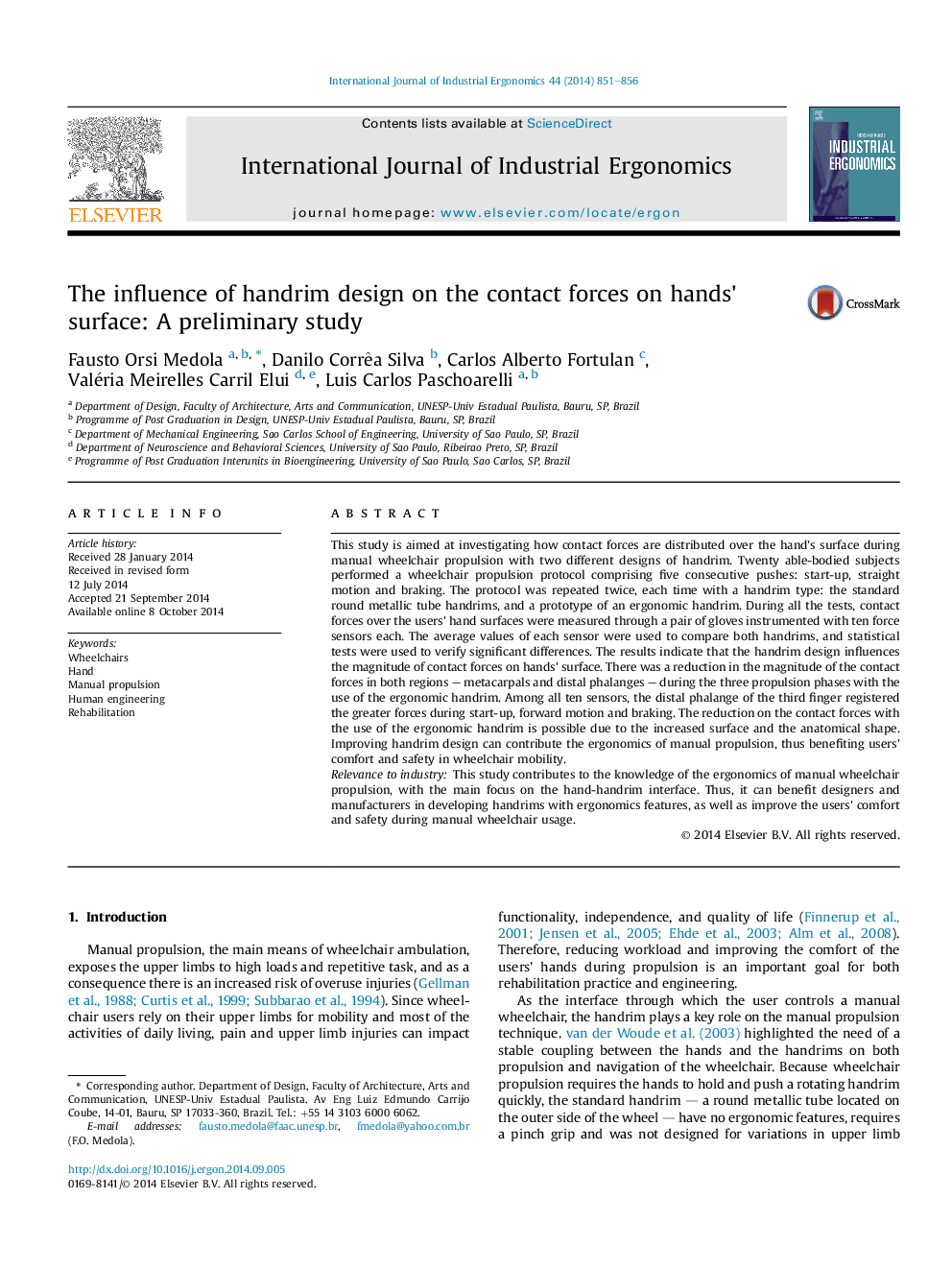| Article ID | Journal | Published Year | Pages | File Type |
|---|---|---|---|---|
| 1096012 | International Journal of Industrial Ergonomics | 2014 | 6 Pages |
•Manual wheelchair propulsion has been related to pain and discomfort on upper limbs.•Contact forces on hands reflect the hand-handrim interaction and can be related to comfort.•The ergonomic handrim reduces the contact forces on hands in comparison to the standard handrim.•Reducing contact forces on hands can benefit users' comfort and safety during manual propulsion.
This study is aimed at investigating how contact forces are distributed over the hand's surface during manual wheelchair propulsion with two different designs of handrim. Twenty able-bodied subjects performed a wheelchair propulsion protocol comprising five consecutive pushes: start-up, straight motion and braking. The protocol was repeated twice, each time with a handrim type: the standard round metallic tube handrims, and a prototype of an ergonomic handrim. During all the tests, contact forces over the users' hand surfaces were measured through a pair of gloves instrumented with ten force sensors each. The average values of each sensor were used to compare both handrims, and statistical tests were used to verify significant differences. The results indicate that the handrim design influences the magnitude of contact forces on hands' surface. There was a reduction in the magnitude of the contact forces in both regions – metacarpals and distal phalanges – during the three propulsion phases with the use of the ergonomic handrim. Among all ten sensors, the distal phalange of the third finger registered the greater forces during start-up, forward motion and braking. The reduction on the contact forces with the use of the ergonomic handrim is possible due to the increased surface and the anatomical shape. Improving handrim design can contribute the ergonomics of manual propulsion, thus benefiting users' comfort and safety in wheelchair mobility.Relevance to industryThis study contributes to the knowledge of the ergonomics of manual wheelchair propulsion, with the main focus on the hand-handrim interface. Thus, it can benefit designers and manufacturers in developing handrims with ergonomics features, as well as improve the users' comfort and safety during manual wheelchair usage.
